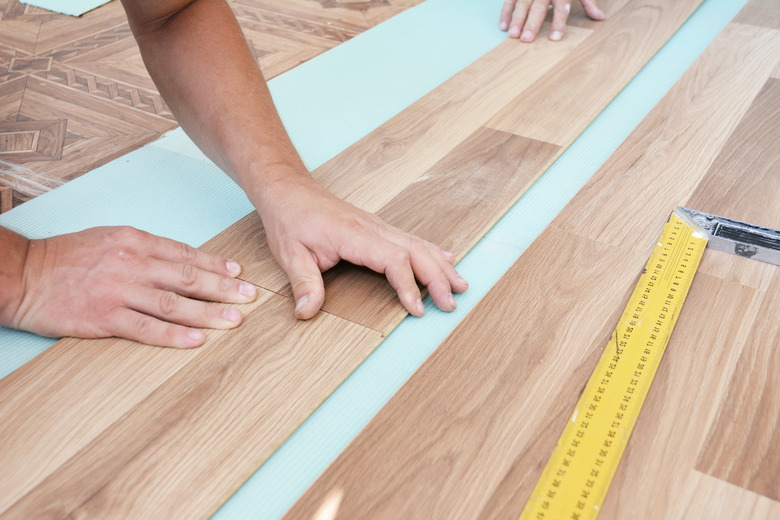Is Laminate Wood Flooring Toxic?
We may receive a commission on purchases made from links.
Is laminate toxic? Laminate wood flooring is a popular option for all types of homes. Whether you already have laminate flooring or you're considering it, understanding potential laminate wood flooring health concerns helps you move forward. Laws have made laminate flooring safer, so the list of laminate flooring with formaldehyde in toxic levels is becoming shorter.
Tip
Some laminate wood flooring contains formaldehyde, which can cause irritation and respiratory issues. Newer laminate flooring that's TSCA Title VI compliant has much lower levels of formaldehyde to keep your home's air safer.
Is Laminate Toxic?
Is Laminate Toxic?
The main concern for laminate toxic properties is the inclusion of formaldehyde. This chemical and others are common in the adhesive that bonds the layers in laminate flooring. After being installed in your home, the chemicals can off-gas for years, meaning the formaldehyde and other chemicals go into the air that you breathe. You can often smell formaldehyde and the other components for quite some time after the installation.
The amount of formaldehyde in laminate flooring can vary significantly based on the materials used and the amount of formaldehyde used. Most newer laminate wood flooring has lower amounts of formaldehyde, which makes it less toxic.
Dangers of Formaldehyde
Dangers of Formaldehyde
Laminate wood flooring health concerns typically relate to formaldehyde and its health effects. Formaldehyde occurs naturally, but it can still be dangerous to your health when used in products inside your home. If your flooring is on the list of laminate flooring with formaldehyde, the off-gassing can cause physical symptoms in your family.
Even low levels of formaldehyde can cause irritation in your eyes, nose, skin, and throat. If you have someone with asthma in the home, the formaldehyde can trigger an attack. Others who are particularly vulnerable are young people, older people, and those with respiratory problems. Formaldehyde has been linked to certain types of cancers, but that's typically seen in workers who have years of exposure to high levels of formaldehyde.
TSCA Title VI Standards
TSCA Title VI Standards
The Toxic Substances Control Act (TSCA) Title VI became law in 2010. The purpose of the law is to regulate formaldehyde emissions for composite wood products, including hardwood plywood, medium-density fiberboard, and particleboard and any finished goods that contain those products, such as laminate flooring.
The regulations establish formaldehyde limits for these products as well as product testing requirements. When preparing to install laminate flooring, look for a product labeled as TSCA Title VI compliant for lower levels of formaldehyde.
Testing for Formaldehyde
Testing for Formaldehyde
If you have older laminate wood flooring in your home, testing is an option. It's tough to find out if older flooring is on a list of laminate flooring with formaldehyde since you likely won't know the manufacturer or other identifying factors. If you're concerned about the laminate flooring in your home, you can have it tested to determine the amount of formaldehyde in it.
Testing is usually only necessary if you're having issues. For example, if there's still a strong chemical odor, you might want to test to see how high the levels of formaldehyde are in your home. Another situation is if you or someone in your family has respiratory issues or irritation that is mainly experienced inside the home. Testing can determine if the symptoms are due to formaldehyde.
If you have your home tested for formaldehyde, keep in mind that the tests might not be accurate. It can be difficult to pinpoint the source of the formaldehyde as well. You can have your home tested for a variety of potential air quality issues, including mold growth and other allergens.
References
- Centers for Disease Control and Prevention: Laminate Flooring Test Results – Health Issues and Solutions
- Consumer Reports: Breathe Easier About Your Flooring
- U.S. Environmental Protection Agency: Formaldehyde Emission Standards for Composite Wood Products
- U.S. Environmental Protection Agency: Questions and Answers Regarding Laminate Flooring
